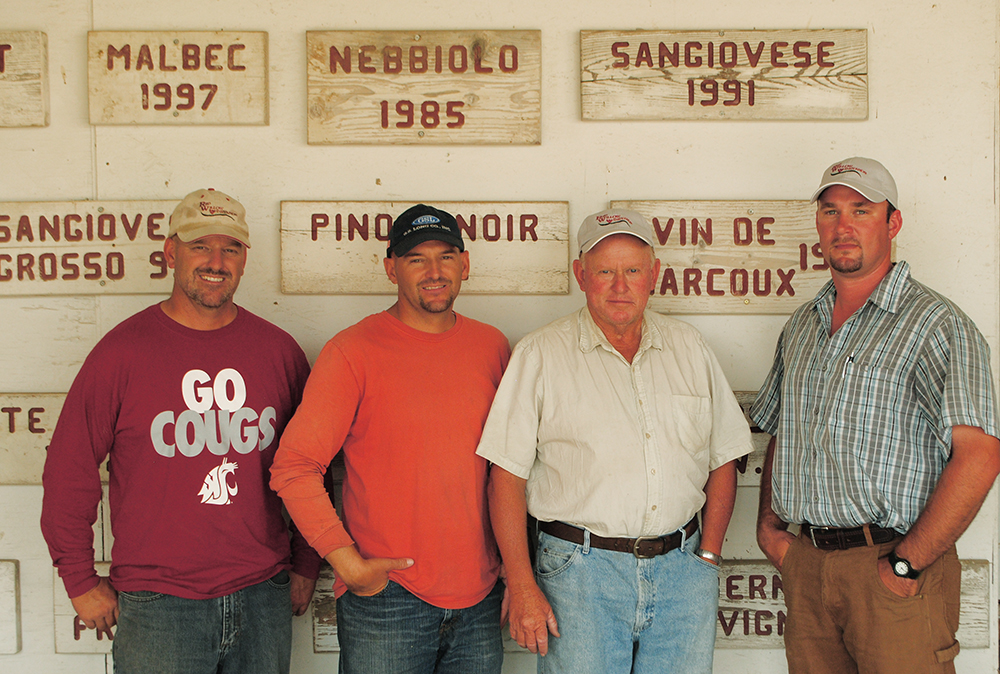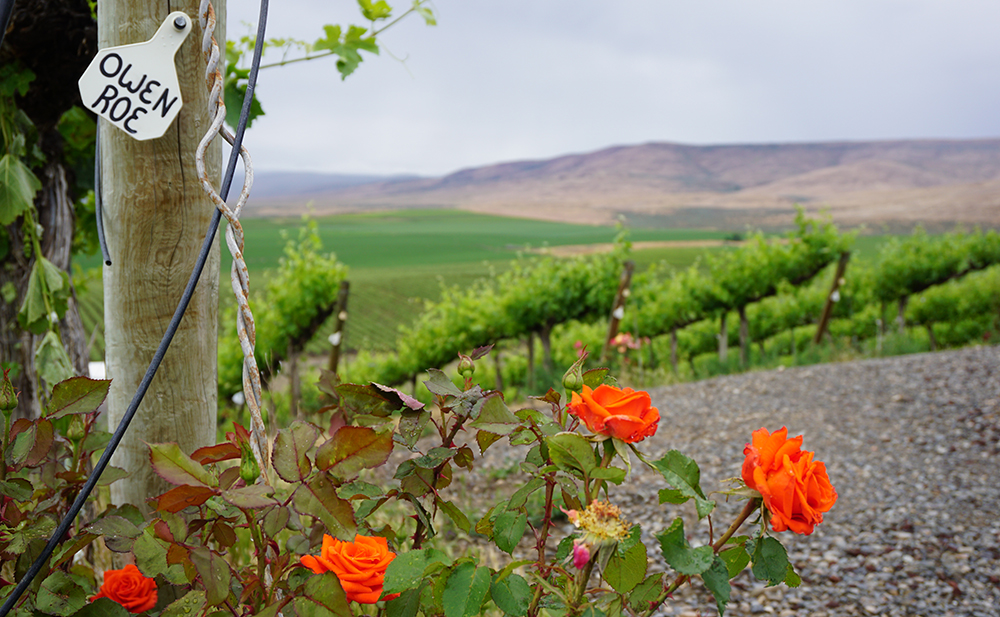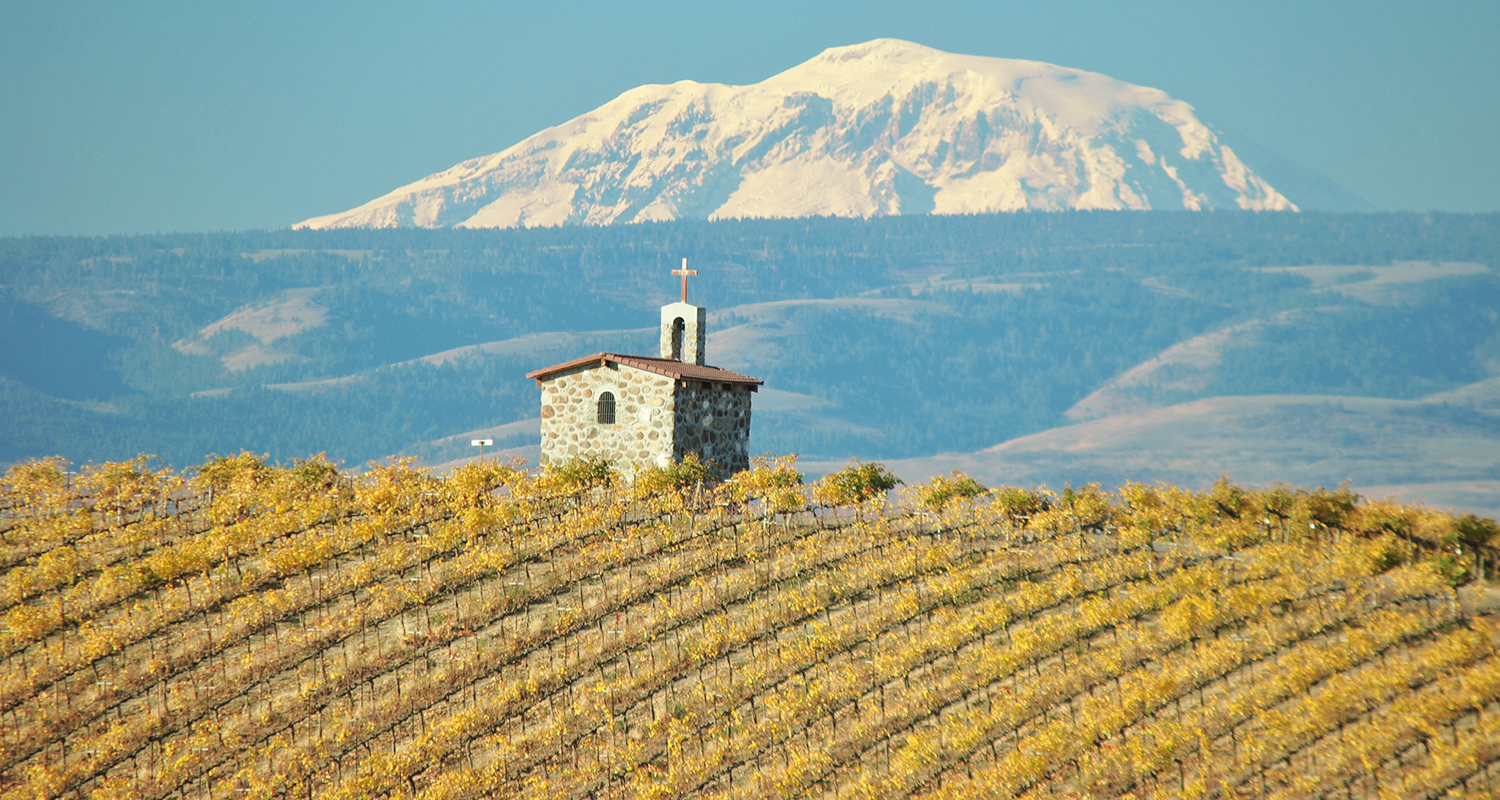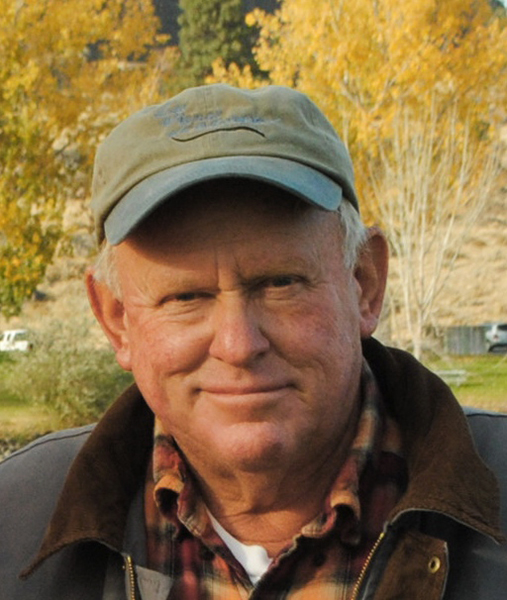Mike Sauer took a chance on planting wine grapes…and the rest is history
Red Willow Vineyard is the result of hard work, dedication and developing relationships with Washington State’s grape growing pioneers.
By Viki Eierdam
Finding good people in the wine industry is not a difficult task. Finding exceptional people that top vintners are “honored to work with” and describe as “inquisitive, hardworking, dedicated and humble” is a more unique discovery. But, Mike Sauer is a unique man. The owner of Red Willow Vineyard in the Yakima Valley AVA, Mike has been farming his 150-acre site for 45 years and, with all of his success, priorities have not escaped him.
“I guess to finish up the best part of the journey, personally, is to be a part of it with family. My wife’s been involved since the very beginning and now it’s my two sons and a son-in-law. They have a continuity of family on the same land. I’m 71 and am gradually turning it over to them but still very involved and it keeps me young to be involved and supporting them and pushing myself,” says Mike.
Red Willow wasn’t always the size it is today. In fact, this lauded vineyard site was once undeveloped sagebrush ground on a steep hill. Enter a scrappy, 24-year-old Mike fresh out of college and itching to make a name for himself, in part to impress his new father-in-law. Traditional crops like wheat and hay wouldn’t grow where Mike wanted to plant and he decided against following the apple trend that put Yakima on the map.
Instead, Mike went with grapes, Concord grapes specifically, until he heard about some French-sounding wines like Chenin Blanc, Pinot Noir and Cabernet Sauvignon. In the early 70s, these were romantic and exotic varietals. “I was interested,” Mike explains. “They caught my fancy.”
Lucky for Mike, these exotic varietals caught the fancy of a certain Dr. Walter Clore as well. Dr. Clore, known as the “Father of Washington Wine,” was well along in his career and, looking for a remote area that he had little growing data on, a collaboration was born. When Mike talks about the early days, his anecdotes are peppered with names like Allen Shoup, Maury Balcom, Don Mercer, Mike Hogue. Jeff Gordon and other Washington wine pioneers — mostly fellow farmers who tried this “new crop” and found more than just success. Interestingly, Mike doesn’t make the connection that he belongs in that elite group of influencers and innovators.
“A lot of what is set up now was during this 15 to 20 years of the early pioneers and it was my privilege as a young man to be a part of the early industry,” Mike adds.
To his credit, Mike was the first to plant Syrah in Washington State, one of the first three to plant Cabernet Sauvignon in 1973 — some of which is still being sourced by Owen Roe Winery. He set up one of the earliest drip irrigation systems in 1972.

More than anything else, family is what means the most to Mike Sauer. Here, Mike (second from right) poses for a photo with (from left) Mike’s son Jonathan, Mike’s son Daniel and Mike’s son-in-law Rick Willsey.
Because of his work ethic, Mike’s early industry associates developed into friendships that gave him an intimate understanding of the needs of vintners. “David Lake (Master Winemaker at Columbia Winery at the time) instilled in me the ownership connection,“ Mike remembers. “He’d invite me to the winery and we’d go through barrels and talk about wine (and) what we could change in the vineyard. I encouraged him to view the vineyard as his vineyard. We always had that almost unspoken connection that those rows of vineyards were his and we were managing them and, conversely, he’d put our name on his label.” In 1981, Columbia Winery released the first vineyard designated wine to feature Red Willow on the label. “This was a totally new concept in the Washington wine industry,”’ Mike explains. “It attached wine quality to specific vineyards.”
Similarly, it was Bob Betz who requested identifiable rows, and to this day the majority of Red Willow Vineyard is allocated in this personal fashion.
It takes little searching to find distinguished area vintners happy to impart kind words about Mike and the quality of Red Willow fruit. Brandon Moss of Gramercy Cellars said, “What we like the most about the Syrah from Red Willow is the tannin structure that we get out of the fruit. It creates the backbone for a wine that has very long-term age-ability. The wines made from Red Willow have a lot of depth aromatically and show savory elements that are a hallmark of great Syrah.”
Mike Macmorran, winemaker at Mark Ryan Winery and his own label, Manu Propria, echoes that sentiment. “Fruit from Red Willow offers a wonderfully pure red and blue fruit quality with savory, non-fruit driven aromatics and flavor elements. This profile complements the more fruit-forward profiles found in our other vineyard sources,” Macmorran said.

As many vineyards do these days, Mike Sauer identifies every row of grapes at Red Willow Vineyard with the name of the winery that is purchasing each row. This row will be harvested this fall for Owen Roe winery. Photo by Dan Eierdam.
As Mike dials down a bit, Red Willow is in good hands with both of Mike’s sons, Jon and Daniel, and his son-in-law, Rick. This multi-generational aspect is one that their winery partners cherish and Mike’s endless fascination with the many layers of wine does not go unnoticed.
“Mike is an extraordinary grape grower,“ said Bob Betz of Betz Family Winery. “He had the vision to plant Washington’s first Syrah, which became the source of probably 50 percent of Washington’s Syrah planting material, as well as some of Washington’s earliest Cabernet Sauvignon vines and other mainstream and secondary varieties. The person behind the farming is a joy to collaborate with: inquisitive, hardworking, dedicated and humble. One of the truly fine people of the wine industry.”
Grape varieties grown in the Red Willow vineyard today include Viognier (first planted in Washington State at Red Willow in 1993), Cabernet Franc (first planted as an experimental block with Dr. Clore in the1970s), Cabernet Sauvignon (first planted in 1973), Mourvedre (first planted in Washington State at Red Willow in 1993), Nebbiolo (first planted in 1985), Petit Verdot (first planted as an experimental block with Dr. Clore in the 1970s), Syrah (first planted in Washington State at Red Willow in 1986), Gewurtztraminer (first planted in 1982), Sangiovese, Tempranillo, Merlot, Lemberger, Petit Syrah, Dolcetto, Barbera and White Riesling.
More than 30 Pacific Northwest wineries source their grapes from Red Willow, including Adams Bench, Andrew Rich, Aspenwood Cellars, Avennia, Barrage Cellars, Betz Family Winery, Cavatappi, Columbia Winery, DeLille Cellars, Efeste’, Eight Bells, Gramarcy Cellars, Hightower, Kerloo Cellars, Kobayashi Wines, Lady Hill Winery, Mark Ryan Winery, Martedi Winery. Natalie’s Estate Winery, Owen Roe, Patterson Cellars, Roland Wines, Savage Grace Wines, T-2 Cellars, Sparkman, Structure Cellars, Van Camp Cellars, Westport Winery and William Church Winery.
The Chapel: You can’t write the story about Red Willow Vineyard without mentioning the stone prayer Chapel that sits high atop a steep hillside at the vineyard. Back in the early 1990s, as Mike was in the process of planting Syrah grapes on the hillside, David Lake jokingly said to Mike, “Now you need to build a chapel on the hilltop like the chapel at Hermitage in the northern Rhone wine region in France.” Mike took Lake seriously, and, with the help of long time employee and stone mason Esequiel Tizintzun, built the chapel from stones removed from the land over the years during cultivation of the vineyard. The chapel still sits high atop the hillside for everyone to see…and take photos of.
For more historical information about Red Willow Vineyard, visit: www.redwillowvineyard.com as well as Wikipedia’s comprehensive site about the vineyard: https://en/Wikipedia.org/wiki/red-willow-vineyard
EDITOR’S NOTE: Viki Eierdam is a freelance writer who lives in Battle Ground, WA. Connect with her at: www.savorsipandsojourn.com.



